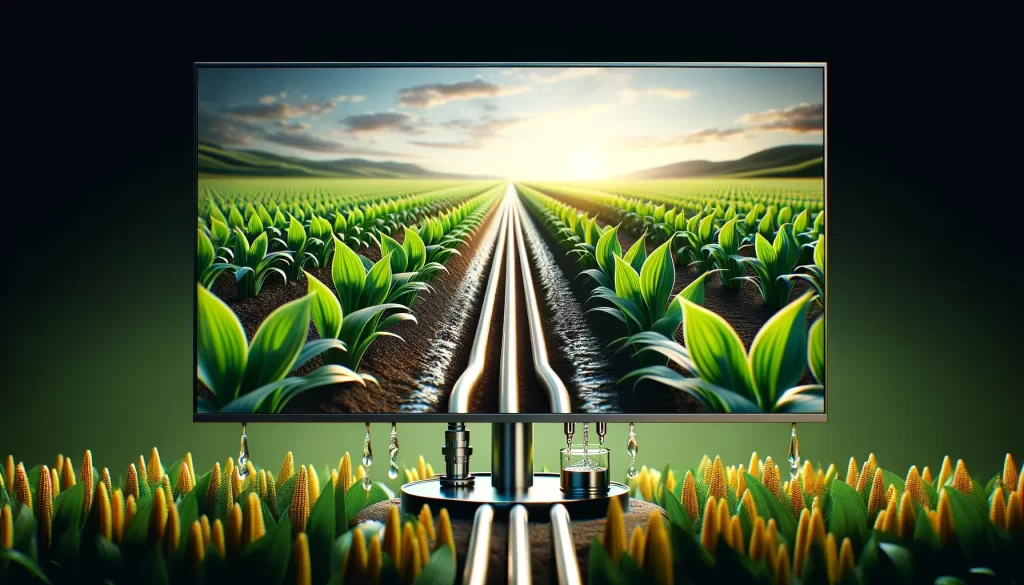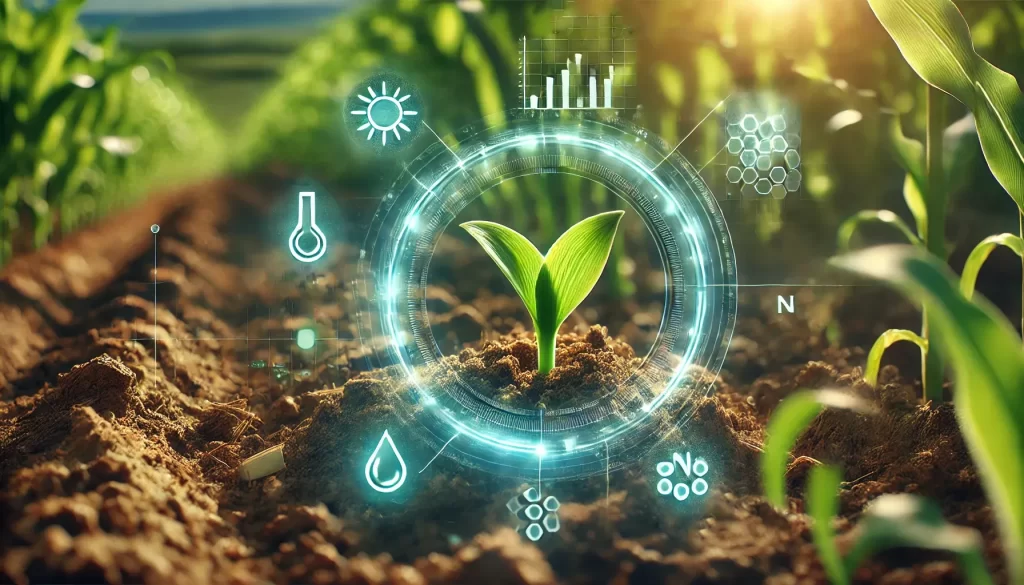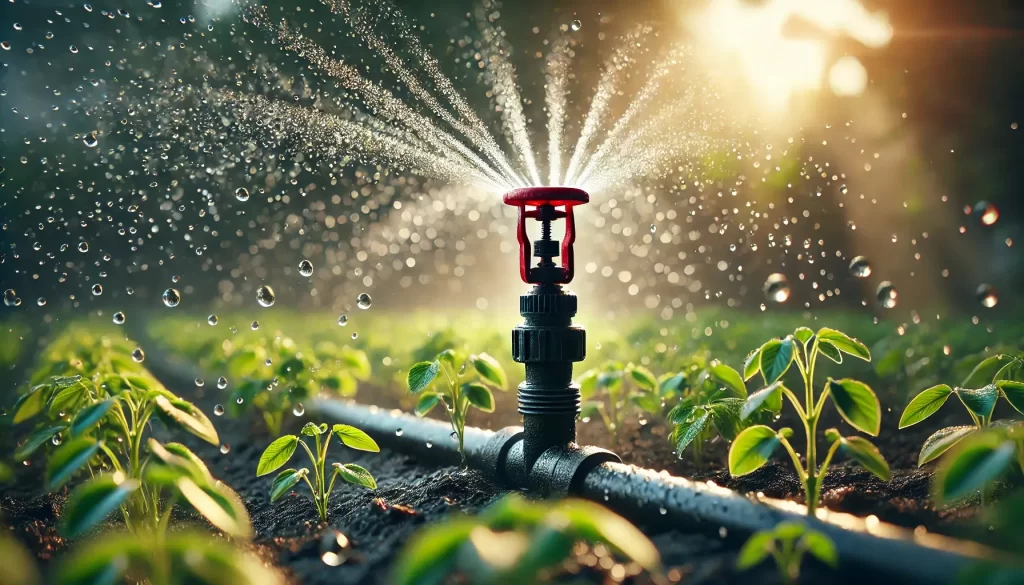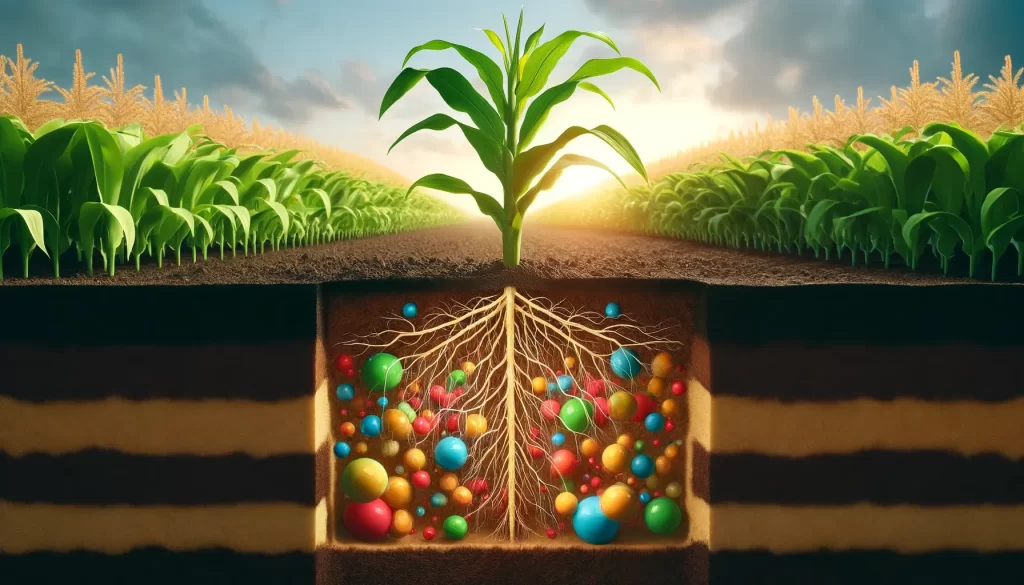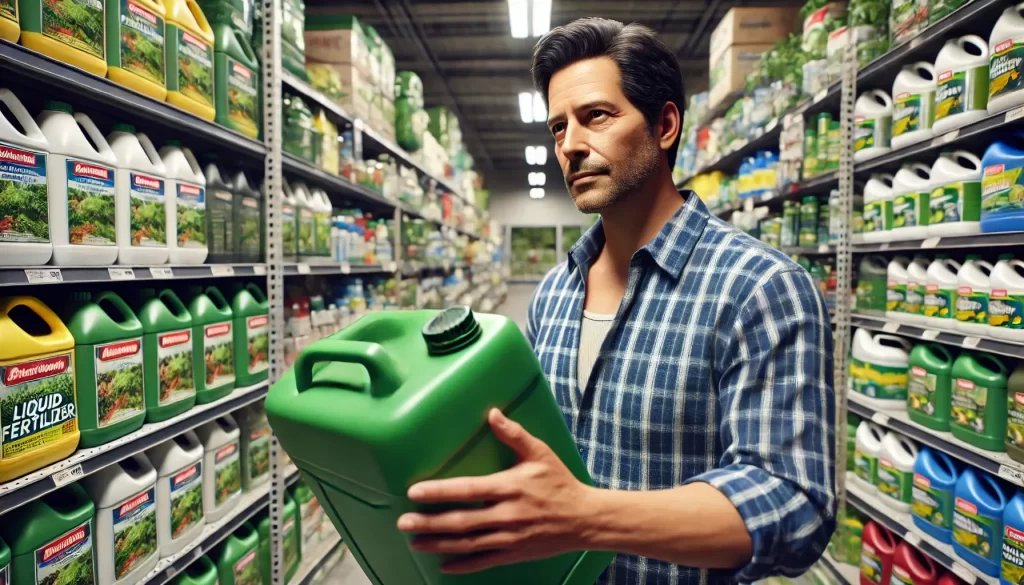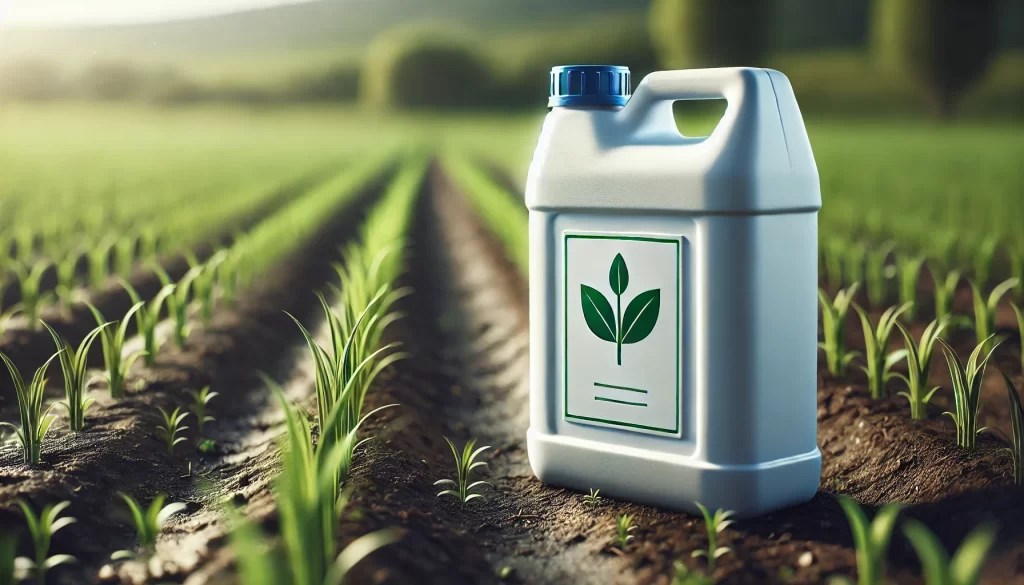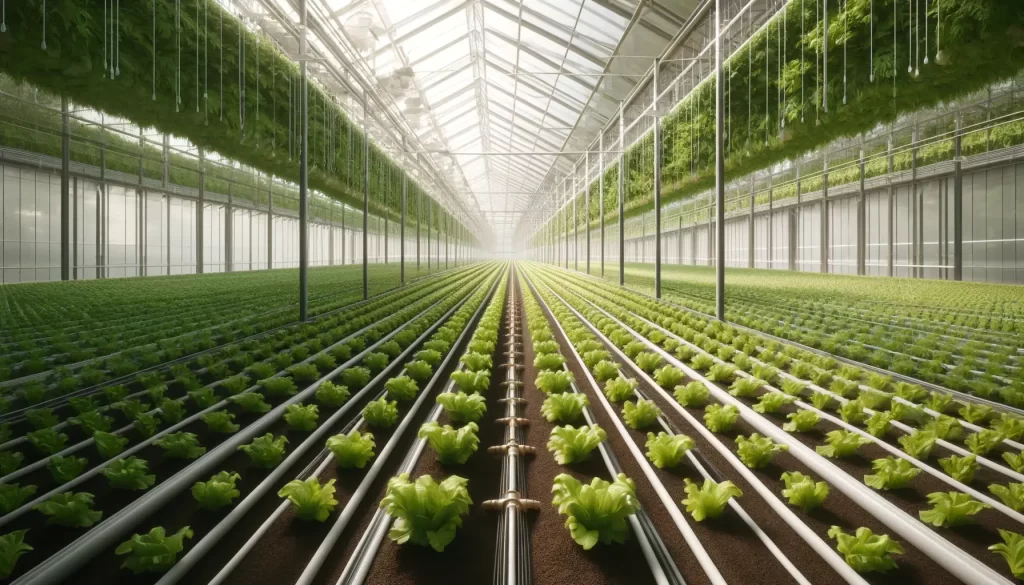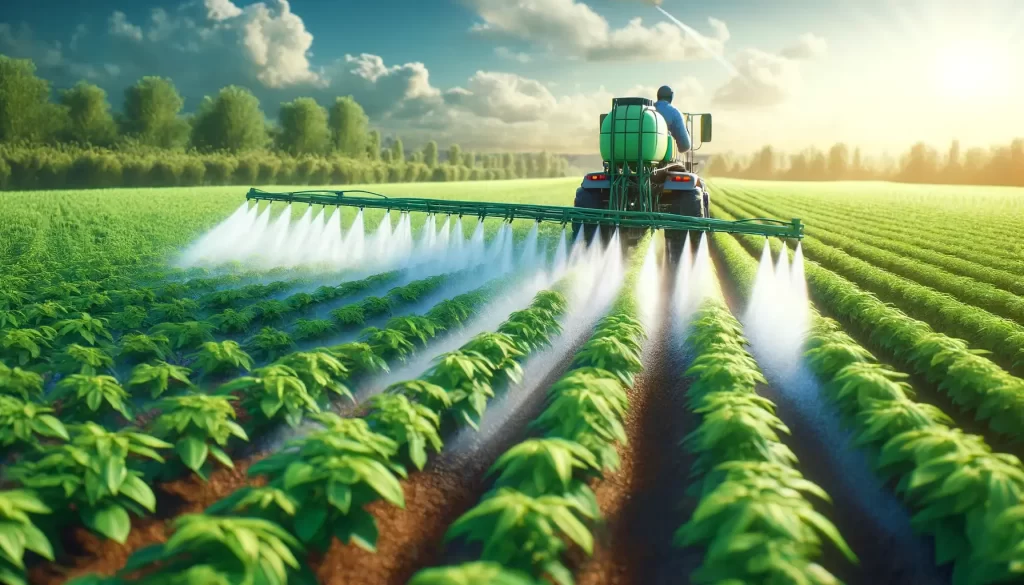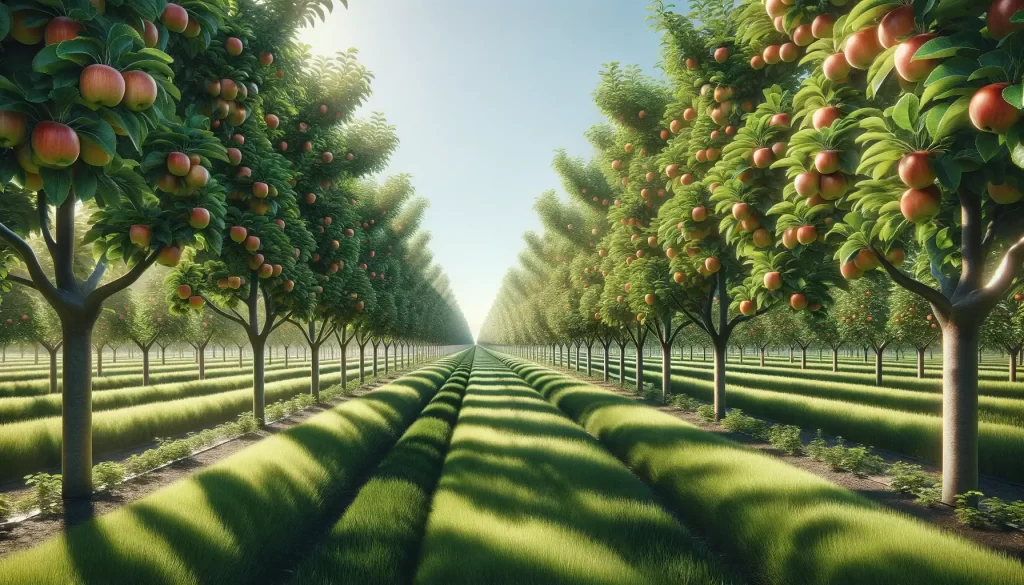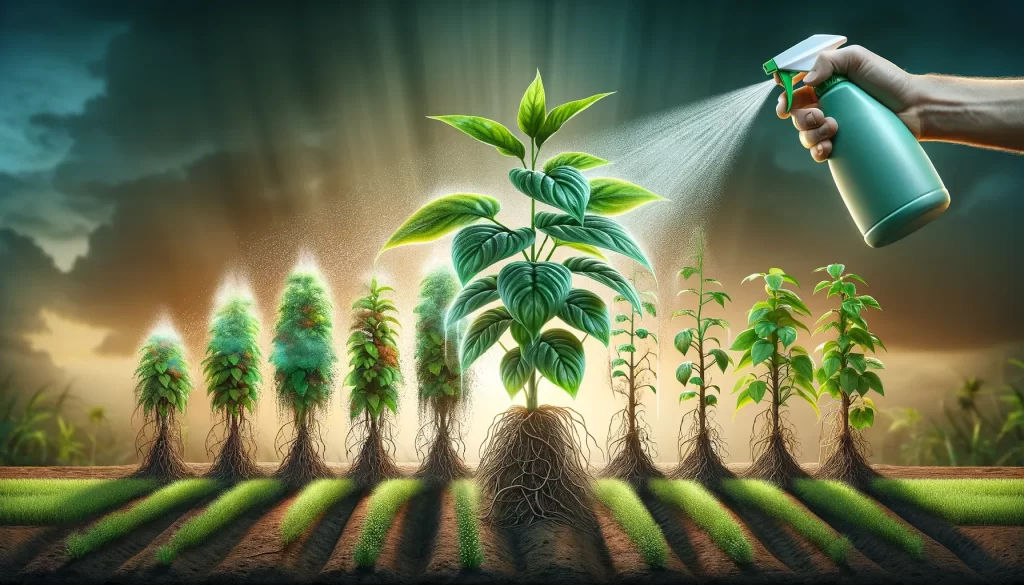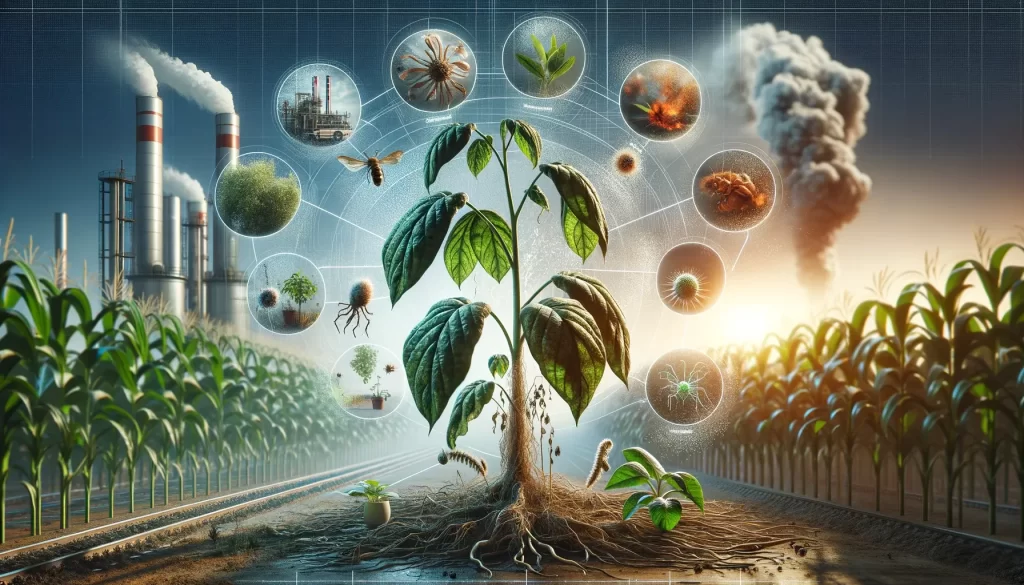Advantages of Liquid Fertilizers: Revolutionary Differences to Traditional Methods
Unlike traditional solid fertilizers, liquid fertilizers have become indispensable in modern agricultural practices by offering many advantages. These advantages contribute to both reducing costs and making plants healthier and more productive. Below, let’s examine in detail the prominent benefits of liquid fertilizers compared to traditional methods:
- Easy Application and Labor Savings: Liquid fertilizers can be easily mixed with water and integrated into irrigation systems. In this way, it can be applied to plants homogeneously even in large areas. Unlike traditional solid fertilizers, labor costs can be significantly reduced as manual spreading on the soil surface is not required. Additionally, problems such as dusting are eliminated.
- Fast Dissolution and Nutrient Uptake: Liquid fertilizers dissolve quickly in the soil and become easily absorbed by the roots or leaves of plants. In this way, plants reach the nutrients they need in a shorter time and grow and develop faster. Traditional solid fertilizers take longer to dissolve in the soil and become usable by plants.
- Equal Nutrient Distribution and Homogeneity: Liquid fertilizers provide a homogeneous distribution when mixed with water. In this way, the entire applied area receives the nutrients needed by the plants in equal amounts. With traditional solid fertilizers, it may be difficult to ensure homogeneous distribution during manual spreading. Solid fertilizers that are not distributed evenly may cause some plants not to receive enough nutrients they need and lead to yield losses.
- Environmentally Friendly and Sustainability: Liquid fertilizers Its retention time in soil is shorter. In this way, the risk of accumulation of nutrients in the soil and environmental pollution is minimized, as in traditional solid fertilizers. Also, Thanks to the controlled application of liquid fertilizers, excessive use of fertilizers is prevented and pollution of water resources is prevented.
- Suitability for Different Plant Species and Growing Conditions: As Greenlive, we offer a wide range of products liquid fertilizer products. These products are specifically formulated to meet the specific needs of different plant species and growing conditions. For example, potassium-based liquid fertilizers can be preferred for tomato and pepper plants, and calcium and magnesium-containing liquid fertilizers can be preferred for fruit trees. In this way, productivity and quality are increased by providing the specific nutrients needed by each plant species in the correct proportions.
These advantages offered by liquid fertilizers are an important step in achieving efficiency and sustainability targets in modern agricultural practices. constitutes. It provides fast and balanced nutrition to plants, allowing them to grow healthy and obtain high-quality products.
How Does Rapid Nutrient Absorption Occur? Nutrition Mechanisms from Soil and Leaves
One of the most important features of liquid fertilizers is that they can be quickly absorbed by plants. This situation is closely related to the structure of liquid fertilizers and the nutrition mechanisms of plants. Below, let’s examine how liquid fertilizers provide rapid nutrient absorption:
Nutrition from Soil:
- Quick Dissolution: Liquid fertilizers become completely soluble when mixed with water, unlike solid fertilizers that are in granular or powder form. In this way, it can easily reach the roots of the plants along with the water movements in the soil.
- Direct Access to Stem Cells: The molecular structure of liquid fertilizers is less suitable for retention by colloids in the soil. In this way, it penetrates more easily into the membranes (plasma membrane) outside the root cells of plants and ensures rapid delivery of nutrients.
- Supporting Root Development: Balanced formulated liquid fertilizers encourage the development of the root systems of plants. Thanks to a healthier and more developed root system, plants have the capacity to absorb more water and nutrients from the soil.
Foliar Nutrition:
- Gas and Nutrient Uptake via Stomata (Air Eyes): When liquid fertilizers are applied by spraying on the leaf surface, they are absorbed by the plant through small pores called stomata. Stomata play a role in the gas exchange of plants as well as in the uptake of water and nutrients from the leaf surface.
- Rapid transmission System: Nutrients taken from the leaf are quickly transported to the entire plant tissue through the plant’s transmission system. In this way, it is ensured that the plant reaches the nutrients it needs, especially without waiting for the dissolution time of traditional solid fertilizers in the soil.
- Creating Urgent Nutrient Deficiencies: The foliar application method is also very effective in eliminating sudden nutrient deficiencies in plants. For example, it is possible to quickly intervene against chlorosis disease, which occurs due to iron deficiency, with foliar application.
Fast nutrition with both soil and foliar application of liquid fertilizers Providing absorption ensures that plants reach the nutrients they need in a timely and effective manner. This is of great importance in terms of healthy growth of plants, increased productivity and strengthening their resistance to stress factors.
Using Liquid Fertilizer in Different Plant Species: Special Solutions for Special Needs
In modern agriculture, special growing techniques and fertilization programs are applied for different plant species. Thanks to the wide range of uses of liquid fertilizers, it is possible to offer solutions suitable for the specific nutritional needs of each plant species. Below, let’s give examples of the uses of liquid fertilizers in different plant groups:
1. Field Crops:To increase the productivity of field crops grown in large areas such as wheat, barley, corn, cotton, sunflower form the productive backbone of plants. During critical periods such as germination, root development, stem strength, grain attitude
2. Garden Plants: The use of liquid fertilizer is widely preferred for vegetables such as tomatoes, peppers, eggplants, cucumbers, zucchinis and leafy plants such as lettuce, spinach and arugula. These plants need a balanced combination of nutrients to grow quickly and produce quality products. Greenlive liquid fertilizers are specially formulated to contain nutrients that increase the quality and durability of vegetables, such as potassium, magnesium and calcium.
3. Greenhouse Cultivation: Vegetables such as tomatoes, peppers, cucumbers, flowers and ornamentals grown in a controlled manner in a greenhouse environment helps you create the right liquid fertilizer program.
For example, if you are a tomato producer and a calcium deficiency is detected in your plants during the fruit setting period, it is possible to quickly solve this problem by foliar application with liquid fertilizers with high calcium content.
Similarly, if iron deficiency is observed in cucumber plants grown in a greenhouse enterprise, healthy growth of the plants can be achieved through applications with iron-containing liquid fertilizers.
The usage area of liquid fertilizers is quite wide. The specific needs of different plant species and growing conditions It is possible to achieve the goals of increasing productivity, obtaining quality products and sustainable agriculture by choosing the right liquid fertilizer and creating an application program.
Liquid Fertilizer Selection and Dosage Calculation: Formulations Specific to Your Plant’s Needs
In order to benefit from the advantages that liquid fertilizers offer you at the maximum level, correct product selection and dose calculation are critical. As Greenlive, we offer liquid fertilizer types specially formulated according to the needs of different plant species within our wide product range. At this point, let’s examine what you should pay attention to when deciding on the right liquid fertilizer:
Selection According to Plant Type and Needs
- Each plant species needs its own specific nutritional elements. For example, potassium-based liquid fertilizers are preferred for tomato and pepper plants, while liquid fertilizers containing calcium and magnesium are more beneficial for fruit trees.
- The development period of the plant is also an important factor in choosing liquid fertilizer. During the germination and root development period nitrogen-based liquid fertilizers While using liquid fertilizers containing potassium and phosphorus during fruit setting and ripening periods, emphasis can be given.
Soil Analysis and Nutrient Elements Evaluation
- It is useful to have soil analysis done to determine exactly the nutrients that plants need. Soil analysis results provide guidance in determining which nutrients are deficient and at what rate liquid fertilizer should be applied.
- Greenlive Technical Service teams provide soil analysis services and ensure that soil samples taken from your lands are analyzed in a laboratory environment. It helps you create the most suitable liquid fertilizer program for you according to the analysis results.
Dosage Adjustment and Administration Schedule
- It is necessary to take the dose recommendation information on the selected liquid fertilizer as basis. However, these doses can be fine-tuned specifically for you by our Technical Service teams, taking into account soil analysis results, plant development period and environmental factors.
- It is important to make liquid fertilizer applications regularly within a program in order to meet the nutrients the plant needs in a balanced way. This program includes determining different liquid fertilizer types and doses according to different development periods of the plant.
The Support We Offer You as Greenlive Dealers
As Greenlive dealers, we offer you comprehensive support in liquid fertilizer selection and dose calculation. With our knowledge and technical infrastructure, we help create the most accurate liquid fertilizer program by analyzing soil samples taken from your lands.
In this way, we contribute to achieving your goals such as increasing productivity, obtaining quality products and transitioning to sustainable agricultural practices by meeting the nutrients your plants need in a full and timely manner.
Application Techniques and Things to Consider: Important Information for Efficient and Safe Use
Correct and effective use of liquid fertilizers allows plants to obtain maximum benefit. Below, let’s examine the application techniques of liquid fertilizers and the points to consider:
Application Methods
- Application with Irrigation Systems: Liquid fertilizers can be integrated into irrigation systems and distributed homogeneously to plants. This method is frequently preferred in large areas and especially in greenhouse environments.
- Foliar Application: Liquid fertilizers are applied to the upper and lower surfaces of plant leaves with the help of special spray devices. This method is effective for quickly providing nutritional supplements and intervening especially in cases of sudden nutrient deficiencies.
- Soil Application: Liquid fertilizers can also be applied directly to the soil surface. However, it should not be forgotten that in this method, it must penetrate into the soil with irrigation or rain.
Things to Consider
- Weather Conditions: Weather conditions should be taken into consideration when applying liquid fertilizer. Application in windy or extremely hot weather may prevent the liquid fertilizer from penetrating sufficiently into the plants.
- Miscibility: Different liquid fertilizers or mixing pesticides together may pose a risk to plant health. For this reason, products that are safe to use together should be preferred by performing miscibility tests. Our technical service teams can guide you on this matter.
- Overdose: Using liquid fertilizers above recommended doses may cause plant poisoning and deterioration of soil structure. Expert advice should be followed regarding dose calculation and application schedule.
- Storage Conditions: Liquid fertilizers should be stored under the conditions specified on the label, protecting them from sunlight and extremely hot environments. Improper storage conditions can reduce the effectiveness of liquid fertilizers.
Advantages We Offer You as Greenlive Dealers
As Greenlive dealers, we provide you with all the necessary support for the safe and effective application of liquid fertilizers. Our technical service teams visit your lands and conduct soil analysis, teach you correct application methods and provide technical consultancy services whenever you need.
In addition, we provide information about the correct storage conditions of the products and help you provide the nutrients your plants need on time with application programs specially prepared for you. In this way, we contribute to running an efficient and sustainable agricultural business by taking advantage of all the advantages of liquid fertilizers.
The Rising Importance of Liquid Fertilizers in Modern Agriculture
The concepts of efficiency, quality and sustainability are becoming increasingly important in modern agricultural practices. Liquid fertilizers are an indispensable tool to successfully implement these concepts.
Liquid fertilizers offer many advantages over traditional solid fertilizers with their rapid dissolution, easy application, equal nutrient distribution, environmentally friendly features and plant species-specific formulations. Maximum benefit can be achieved from the use of liquid fertilizers through soil analysis, correct product selection, dose calculation and safe application techniques.
As Greenlive we offer you a wide range of liquid fertilizers and expert technical support. By choosing our products as a Greenlive dealer, you can enjoy the healthy growth of your plants, high efficiency and quality products.
Contact us to get more information about liquid fertilizers and become a Greenlive dealer!
Frequently Asked Questions (FAQ)
What is Liquid Fertilizer?
Liquid fertilizer is a type of water-soluble fertilizer that contains the nutrients that plants need. It is absorbed faster and used more easily by plants compared to solid fertilizers.
What are the Advantages of Liquid Fertilizers?
Liquid fertilizers have many advantages. The most important of these are:
- Quickly soluble and easily absorbed.
- Provides equal nutritional distribution.
- It causes less damage to the soil.
- Requires less labor.
- Different application methods can be used.
- Can be specially formulated for different plant species.
Can Liquid Fertilizers Be Used in Organic Agriculture?
Yes, there are organic and specially certified liquid fertilizers suitable for use in agriculture. These fertilizers are produced from natural ingredients of plant and animal origin and comply with organic farming regulations.
How Often Should Liquid Fertilizers Be Applied?
Liquid fertilizer application frequency varies depending on plant type, growing environment, season and soil analysis results. In general, it is recommended to apply liquid fertilizer at regular intervals during different development periods of the plant and when needed. Greenlive Technical Service teams can prepare the most suitable application program for you.
What is the Shelf Life of Liquid Fertilizers?
The shelf life of liquid fertilizers varies depending on the content of the product and the type of packaging. Attention should be paid to the expiration date stated on the product packaging. Liquid fertilizers kept under appropriate storage conditions maintain their shelf life.
Do Liquid Fertilizers Provide Protection Against Plant Diseases?
Liquid fertilizers do not directly protect against plant diseases. However, they increase the plant’s resistance to diseases by ensuring a healthy and balanced nutrition.
Can Liquid Fertilizers Be Used to Control Weeds?
No, liquid fertilizers are not used to control weeds. Agricultural pesticides called herbicides should be preferred to combat weeds.
What Should Be Considered for the Safe Use of Liquid Fertilizers?
For the safe use of liquid fertilizers, the instructions on the label should be followed and recommended doses should not be exceeded. Products that are safe to use together should be preferred by performing miscibility tests. Storage conditions should be taken into consideration and expert recommendations should be followed. Greenlive Technical Service teams can guide you on the safe use of liquid fertilizers.
What are the Liquid Fertilizer Prices?
Liquid fertilizer prices vary depending on the product’s content, brand, packaging type and seller. You can consult Greenlive dealers or the website for current liquid fertilizer prices.
What Should Be Considered When Purchasing Liquid Fertilizer?
Here are some important points to consider when purchasing liquid fertilizer:
- Selection of products suitable for plant type and needs
- Preferring reliable and certified products
- Checking product content and dosage information
- Suitable storage conditions
